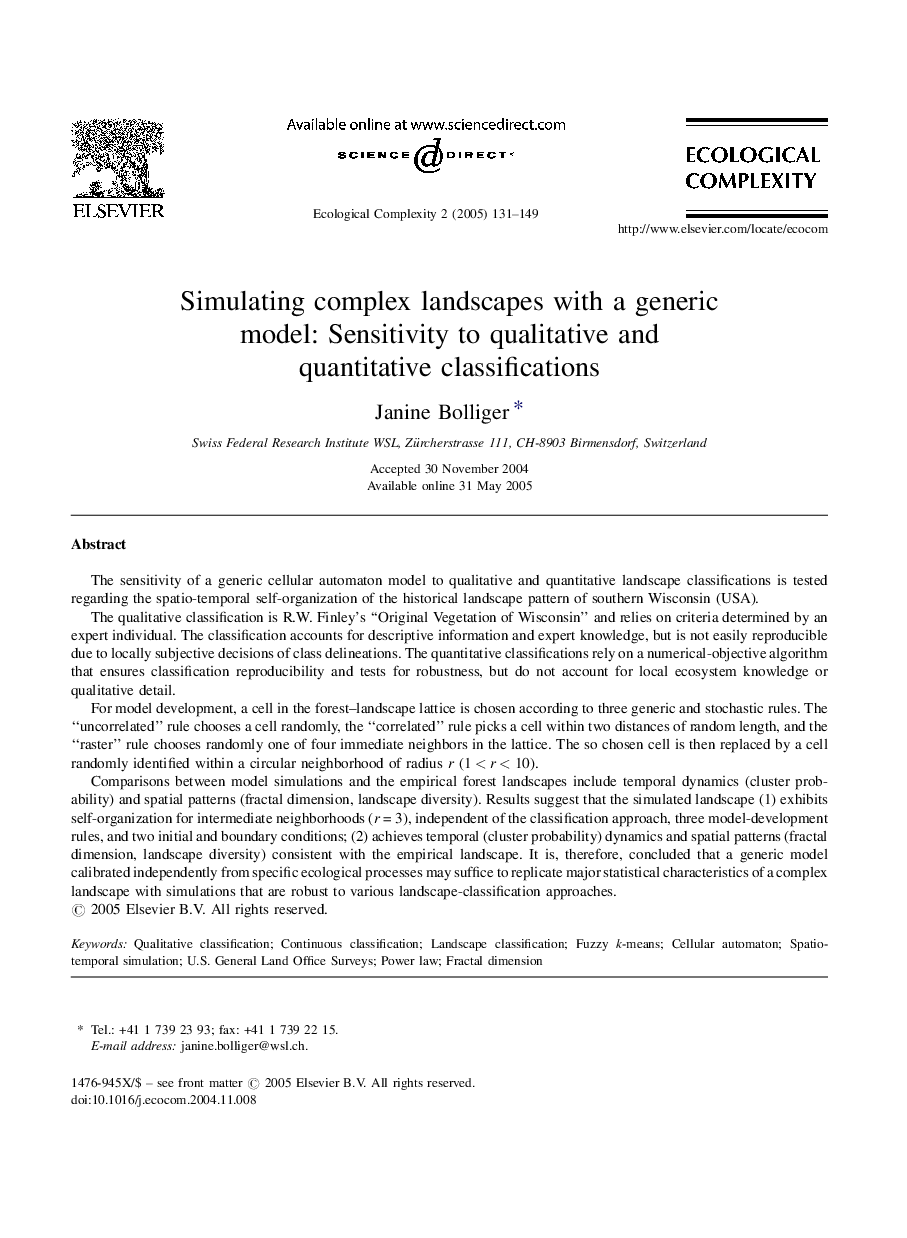| Article ID | Journal | Published Year | Pages | File Type |
|---|---|---|---|---|
| 9443110 | Ecological Complexity | 2005 | 19 Pages |
Abstract
Comparisons between model simulations and the empirical forest landscapes include temporal dynamics (cluster probability) and spatial patterns (fractal dimension, landscape diversity). Results suggest that the simulated landscape (1) exhibits self-organization for intermediate neighborhoods (r = 3), independent of the classification approach, three model-development rules, and two initial and boundary conditions; (2) achieves temporal (cluster probability) dynamics and spatial patterns (fractal dimension, landscape diversity) consistent with the empirical landscape. It is, therefore, concluded that a generic model calibrated independently from specific ecological processes may suffice to replicate major statistical characteristics of a complex landscape with simulations that are robust to various landscape-classification approaches.
Related Topics
Life Sciences
Agricultural and Biological Sciences
Ecology, Evolution, Behavior and Systematics
Authors
Janine Bolliger,
